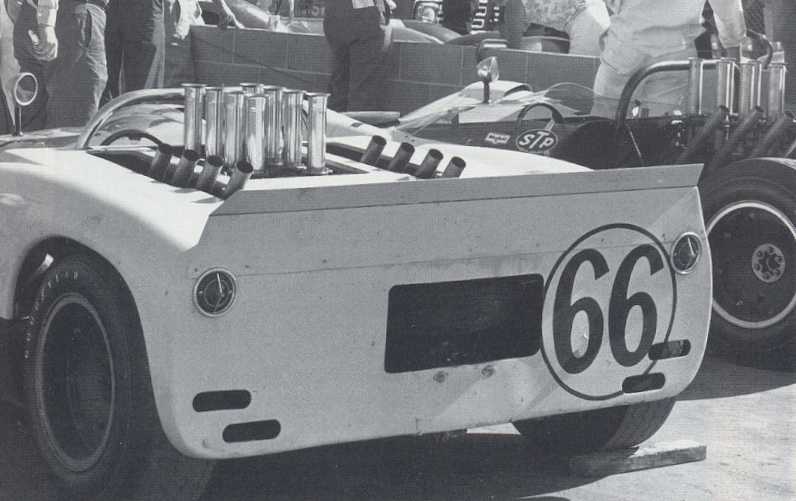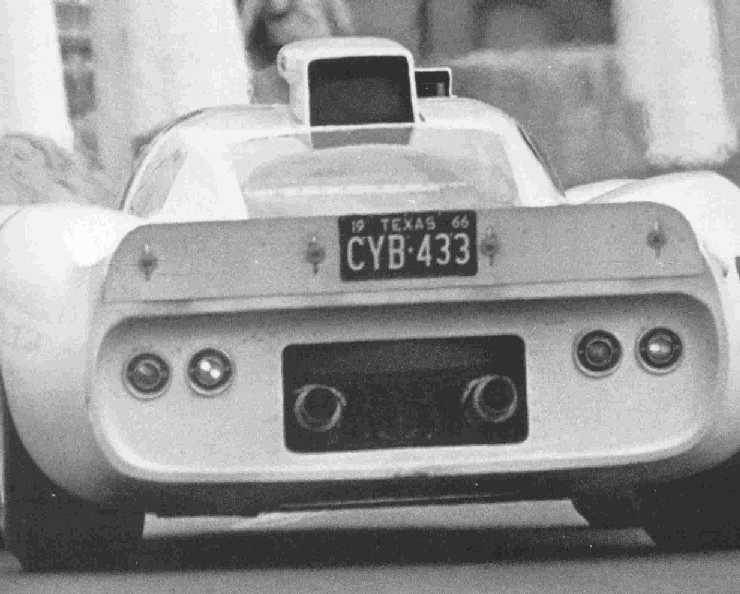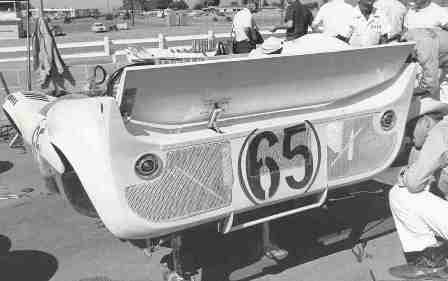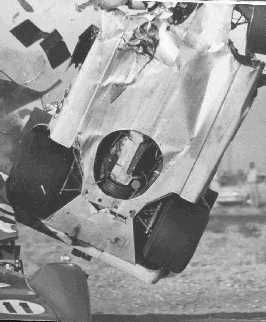Van Pershing - Tucson Corvair Association
When Falconer's book on the Chaparrals came out I bought one immediately. As I thumbed through the pages I started seeing all sorts of little Corvair "clues". In June 1962 General Motors displayed the mid-engined Chevrolet Corvair Monza GT at Road America. It was during the race that Jim Hall met Frank Winchell, who headed the GM R&D team responsible for the GT. This meeting led to a sharing of information and testing facilities, including wind tunnel data on the Monza GT. Some of the styling references for the Chaparral 2 Coupe came from the Monza.
According to the mechanical specifications in the book, the Chaparral 2A chassis 001 was powered by an alloy small block 327 that popped out between 415 and 475 horsepower using 4 - 2 barrel Weber 48 DCOE carbs and a Corvair 4-speed transmission. In May of 1964 the Corvair transmission gave way to a single speed automatic gearbox.
Tire design was another area the Corvair helped Jim Hall's efforts. Jim: "At one point in time Chevrolet had more information and more knowledge on tires than Firestone themselves. They built the first really sophisticated tire grinders to simulate worn tires for the Corvair litigation cases. They took that entire area two or more toes up the ladder of technology. They could actually simulate the worst possible conditions for a tire that had worn incorrectly like it might on swing-axle suspensions. The tire guys were dumbfounded; I remember that when they [Firestone] were asking them to build tires for the Chaparral, the tires guys were being told by Chevrolet how to build tires."
Jim Hall, Hap Sharp and Roger Penske did some work on the Corvair at Hall's Rattlesnake Raceway in Midland, Texas - a track which Hall constructed to do test work on race cars which GM utilized as well. Jim: "I did quite a bit of work on the Corvair. I used to drive it around with the tires deflated so the rims touched the ground. We had to show how far out you could get it and keep the car the right way up. When they designed and built that thing they looked at what was on the market and there were several small cars like the Volkswagen Beetle: it was out there and it would hurt anybody. They were wrong, and of course they immediately took steps to improve it, but that was eventually the demise of the car and that was a shame.
"What we found out is that you can turn over any passenger car on dry concrete - and it doesn't matter whether it's a Corvair or a Ford Fairlane. All you needed to do was to be brutal with the steering. There's no question of that; it's not a question of either/or, you can do it to all of them. A swing-axle car will jack, and its center of gravity gets higher and its track gets narrower so it's easier to turn over. End of story."
The remains of Chaparral's tire testing rig lie derelict in 1985 near the Rattlesnake Raceway skid pad. The engine that drove the sole wheel was a flat-six Corvair powerplant. More recently, Hall intimated that he might restore the unit.
The Corvair also supplied taillights for many of the Chaparrals. Not that that's a big deal but, let's face it, there's a little "Corvair" in all of us!
WARNING: This car had NO Corvair tail lights!




